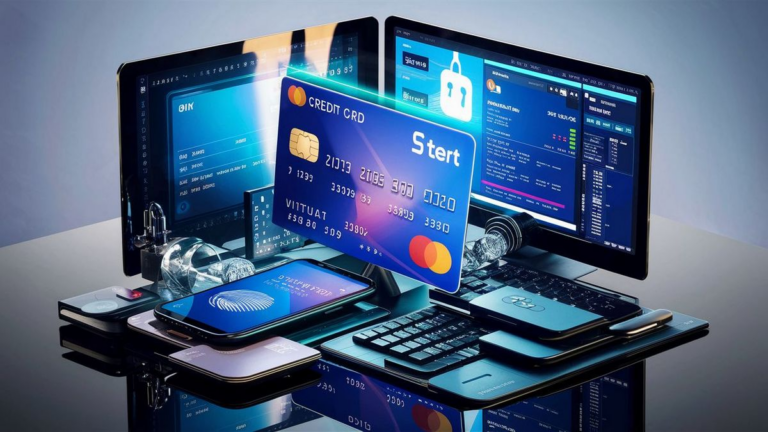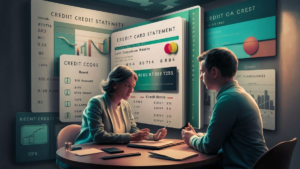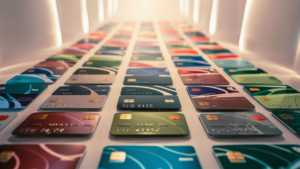In today’s digital age, financial transactions have become increasingly convenient and secure, thanks to innovations like virtual credit cards. These virtual cards are gaining popularity due to their ease of use and enhanced security features. In this guide, we delve into the intricacies of virtual credit cards, exploring what they are, how they work, and their benefits.
What are Virtual Credit Cards?
A virtual credit card is a digital version of a traditional credit card. Unlike physical cards made of plastic, virtual credit cards exist solely in electronic form. They are typically issued by banks or financial institutions and are linked to an existing credit or debit card account. Each virtual card is assigned a unique number, expiration date, and security code, allowing users to make online purchases securely.
How Do Virtual Credit Cards Work?
Virtual credit cards function similarly to physical credit cards but with added layers of security. When a user generates a virtual card, the issuing bank creates a temporary card number that is linked to the user’s primary account. This temporary number can only be used for a single transaction or for a specified time period, providing an extra level of protection against fraud.
When making an online purchase, users enter the virtual card details instead of their primary card information. The transaction is processed as usual, but since the virtual card number is unique and disposable, it minimizes the risk of unauthorized transactions or identity theft.
The Benefits of Virtual Credit Cards
Virtual credit cards offer several advantages over traditional payment methods:
- Enhanced Security: Virtual cards provide an additional layer of security by masking the user’s primary card details, reducing the risk of fraud and unauthorized transactions.
- Convenience: With virtual cards, users can easily generate new card numbers for each online transaction, eliminating the need to share their primary card information.
- Protection Against Identity Theft: Since virtual card numbers are temporary and disposable, they are less susceptible to theft or misuse, safeguarding the user’s identity and financial information.
- Budget Management: Virtual cards can be assigned specific spending limits or expiration dates, helping users stay within their budget and track their expenses more effectively.
How to Get a Virtual Credit Card
Many banks and financial institutions offer virtual credit card services to their customers. To obtain a virtual card, users typically need to sign up for online banking or mobile banking services provided by their bank. Once registered, users can generate virtual cards through the bank’s website or mobile app, often with the option to customize spending limits and other security settings.
Virtual credit cards represent a modern and secure way to make online transactions. By offering enhanced security features and added convenience, they have become a preferred payment method for many consumers. As digital commerce continues to evolve, virtual credit cards are likely to play an increasingly important role in shaping the future of online payments.
Frequently Asked Questions
Below are some frequently asked questions regarding virtual credit cards:
- Are virtual credit cards safe to use? Yes, virtual credit cards are designed with enhanced security features, making them safe for online transactions. They help protect against fraud and unauthorized access to your primary card details.
- Can I use a virtual credit card for in-store purchases? Typically, virtual credit cards are intended for online transactions. However, some banks may offer options to link virtual cards to mobile payment apps for in-store purchases.
- Do virtual credit cards affect my credit score? Since virtual credit cards are linked to your existing credit or debit card account, transactions made using virtual cards can impact your credit score just like regular card transactions.
- What happens if my virtual credit card is compromised? If your virtual credit card is compromised, you can usually report it to your bank or financial institution immediately to have it canceled. Since virtual cards are temporary and disposable, the impact of such compromises is often minimal.
Comparing Virtual and Physical Credit Cards
While both virtual and physical credit cards serve the same purpose, there are notable differences between them:
| Aspect | Virtual Credit Cards | Physical Credit Cards |
|---|---|---|
| Form | Digital, no physical card | Physical, plastic card |
| Security | Enhanced security features, temporary numbers | Less secure, vulnerable to theft or skimming |
| Usage | Primarily for online transactions | Both online and in-store purchases |
| Convenience | Easy to generate new card numbers | Need to carry physical card |
See also:






